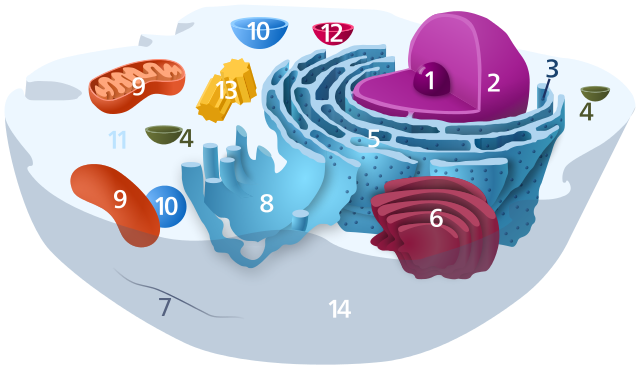Difference between Cytoplasm and Cytoskeleton
Cytoplasm and Cytoskeleton are the two most commonly occurring words while studying cellular biology. Though they might seem confusing at first, they are quite different terms. Let us understand them.
What is Cytoplasm?
Cytoplasm is a thick jelly like fluid that exists within all types of cells. It is found in both prokaryotic and eukaryotic cells. Prokaryotic cells are primitive cells that do not have any nucleus. Eukaryotic cells nucleated cells. The cytoplasm within the nucleus is separate and is known as nucleoplasm.
Cytoplasm is very vital for the functioning of both plant and animal cell. Every cell has many small organelles like mitochondria, Golgi apparatus, nucleolus etc. situated within it. These organelles are suspended in the cytoplasm that is contained in the cell. Cytoplasm is composed of water, salt and few dissolved nutrients. It is colourless and translucent and is also known as cytosol.
The cytoplasm or cytosol contains many dissolved enzymes that help to break down larger molecules into smaller ones so that they can be used by the organelles. For example the glucose molecule is too big to enter the mitochondria for internal respiration. So it is broken down into a smaller molecule within the cytoplasm and then absorbed by the mitochondria for further use. Similarly other proteins, carbohydrates and fats too are partially digested in the cytoplasm before being absorbed by other organelles. The waste products of metabolic activity are dissolved in the cytoplasm.
The cytoplasm also helps in movement of nutrients within the cell. The movement is known as cytoplasmic streaming. The cytoplasm also prevents the organelles from collapsing together by keeping them apart. The cytoplasm gives the plant and animal cells a shape. It also acts as a shock absorber when two cells collide. It protects the organelles form internal as well as external jerks. Many cellular activities occur like glycolysis, cell division and other metabolic functions occur in the cytoplasm. When the cell and the cytoplasm are seen as a three dimensional structure, the inner, granular mass is called the endoplasm and the outer, clear and glassy layer is called the cell cortex or the ectoplasm. During any cellular activity the movement of calcium ions occurs between the cellular cytoplasm and the external cellular fluid.
What is Cytoskeleton?
The term cytoskeleton was first given by a Russian scientist Nikolai K Koltsov in 1903. The cytoskeleton is an important component of the cytoplasm. It is a network of intertwined protein fibres. The cytoskeleton is very much dynamic in nature as it keeps breaking down and rebuilding in parts. It is found in all prokaryotic and eukaryotic cells namely plant, animal and fungal cells. The proteins that make up the cytoskeleton in cells of various organisms are different and have varied properties and interactions.
The cytoskeleton of human and animal cells have three major protein components- microfilaments called as actin, microtubules called as tubulin and intermediate filaments.
The cytoskeleton is the part of the cytoplasm that helps to provide shape and structure to the cell. It also provides mechanical resistance that prevents the cell from collapsing. The cytoskeleton contracts and relaxes which allows the cell to and its environment to change shape while passing through narrower areas in the body. This feature helps in cellular migration.
The cytoskeleton plays a major role in signal exchange between cells, uptake of ions from extracellular fluid (endocytosis), and chromosomal segregation during cell division and division of mother cells into two daughter cells (cytokinesis). The cytoskeleton helps in intracellular movement of molecules and nutrients.
The cytoskeleton is also believed to function as a template for construction of cell wall and also forms certain structures for cellular movement such as flagella, cilia, lamellipodia and podosomes.
The most important example of cytoskeletal function is muscle cell contraction where the actin and myosin proteins contract and elongate to allow the whole muscle to shorten and lengthen.
To conclude we can say that cytoskeleton is an integral part of the cytoplasm and many of the cytoplasmic functions are due to the presence of cytoskeleton.
- Difference Between Flu and Fever - September 2, 2015
- Difference Between Haemoglobin and Iron - July 10, 2015
- Difference between Purpura and Ecchymosis - July 2, 2015
Search DifferenceBetween.net :
Leave a Response
References :
[0]http://en.wikipedia.org/wiki/Cytoplasm
[1]http://en.wikipedia.org/wiki/Cytoskeleton
[2]http://www.biology4kids.com/files/cell_cytoplasm.html
[3]http://education-portal.com/academy/lesson/what-is-cytoplasm-definition-functions-quiz.html
[4]http://biology.tutorvista.com/animal-and-plant-cells/cytoplasm.html

